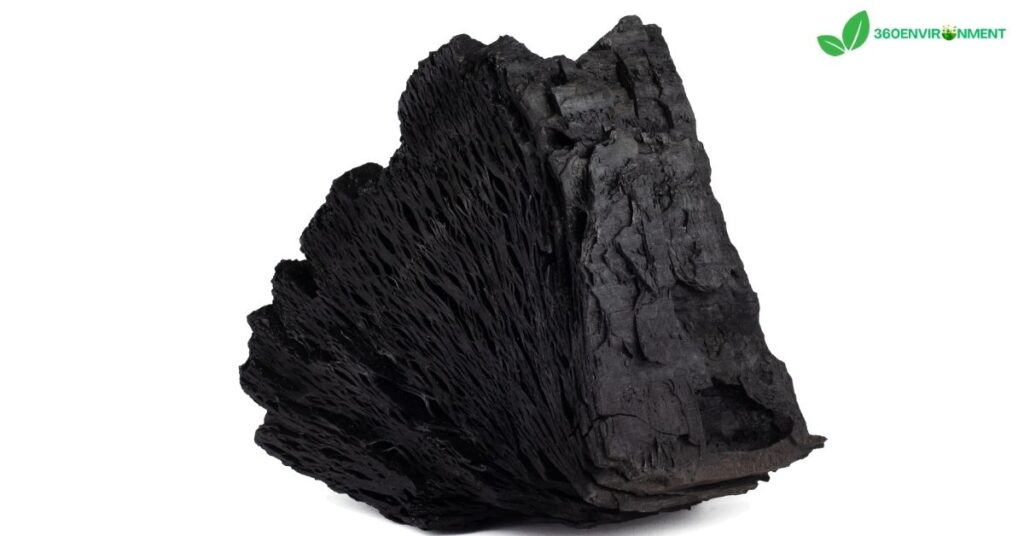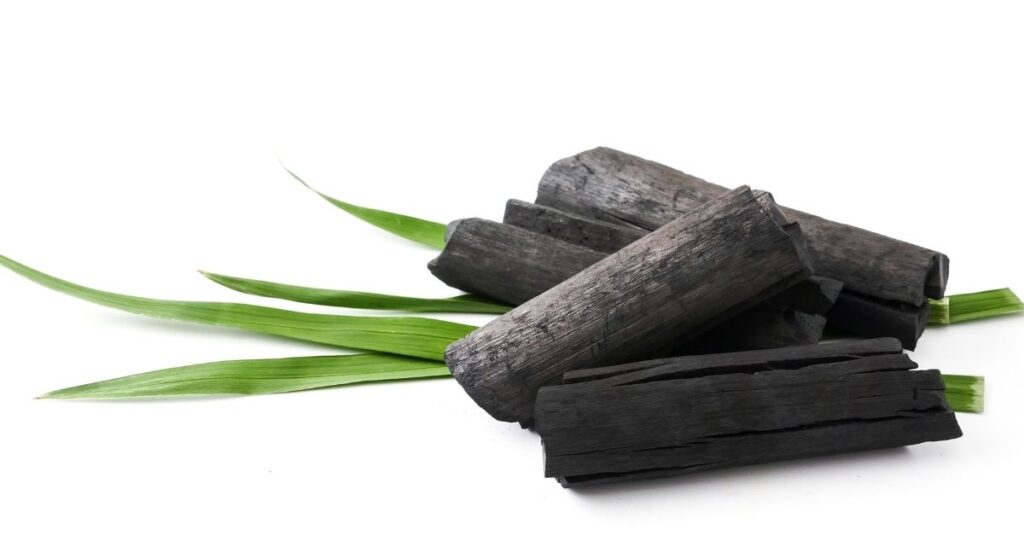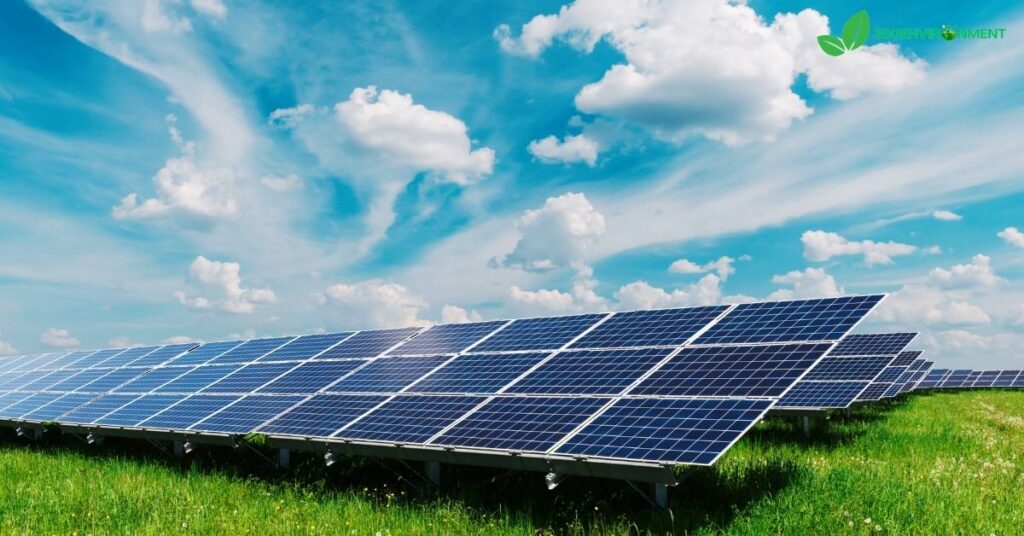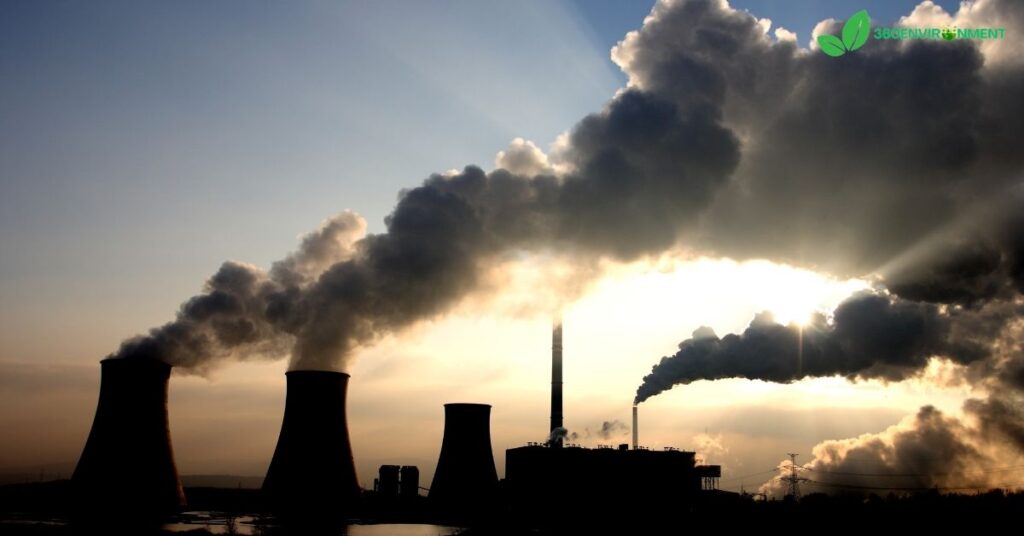Introduction
Charcol is a misspelled word, the correct word is Charcoal, a carbon-rich material obtained through the partial burning of wood or other organic materials, that humans have used for thousands of years. It is an essential fuel source for cooking, heating, and industrial processes, and it plays a crucial role in metallurgy, particularly in steel and iron production. While charcoal(Charcol) is often seen as a traditional fuel, its production and use have significant environmental implications, including deforestation, carbon emissions, and soil degradation.
This article delves into the environmental niche of charcoal, examining its production methods, the ecological impacts of its use, the historical context of charcoal production, and sustainable alternatives that are gaining popularity. Understanding the broader ecological consequences of charcoal use is essential in promoting sustainable practices and mitigating its environmental impacts.
1. What Is Charcoal?
Charcoal is a solid, porous material that is primarily composed of carbon. It is produced by heating wood or other organic materials in the absence of oxygen, a process known as pyrolysis. This process removes water and volatile compounds, leaving behind a highly combustible substance that burns more efficiently than raw wood.

1.1. Types of Charcoal(Charcol)
Charcoal comes in several forms, each with distinct properties and applications. Understanding the different types of charcoal can help clarify its various uses and impacts on the environment.
- Lump Charcoal: Made from whole pieces of wood, lump charcoal is considered more natural than other types because it contains no additives or fillers. It burns at higher temperatures and produces less ash, making it a popular choice for grilling and barbecuing.
- Briquettes: Charcoal briquettes are made from ground-up wood and sawdust, combined with binders, and compressed into uniform shapes. While more convenient for consistent burning, they often contain chemical additives that can affect air quality and increase pollution during combustion.
- Activated Charcoal: This type of charcoal undergoes additional processing to create a highly porous surface, making it ideal for filtration and purification. Activated charcoal is used in water and air purification systems, as well as in medical applications for detoxification.
1.2. Historical Context of Charcoal Use
The history of charcoal use stretches back millennia. Early humans discovered that burning wood in a low-oxygen environment created a fuel that was easier to transport and more efficient for heating and cooking. Charcoal became particularly important during the Iron Age when it was used in the smelting of metal ores to produce tools and weapons.
- Metallurgy: In traditional iron production, charcoal was essential for providing the high temperatures required to smelt iron ore into wrought iron or steel. Before the advent of modern fossil fuels like coal and natural gas, charcoal was the primary fuel used in industrial processes.
- Indigenous Use: Many Indigenous cultures around the world have used charcoal in various capacities, from cooking to medicine. In regions like Africa and Southeast Asia, charcoal remains a crucial energy source for rural communities.
2. The Environmental Impact of Charcoal Production
Despite its long history of use, charcoal production and consumption have significant environmental consequences. From deforestation to air pollution, the widespread reliance on charcoal presents challenges that require urgent attention.

2.1. Deforestation and Habitat Loss
The most significant environmental impact of charcoal production is deforestation. In many parts of the world, particularly in developing countries, large areas of forest are cleared to produce charcoal, leading to habitat destruction and biodiversity loss.
- Tree Harvesting: Charcoal production often involves the cutting down of trees, particularly hardwood species, which are prized for their dense wood and ability to produce high-quality charcoal(Charcol). The removal of these trees can lead to the degradation of ecosystems and the loss of critical habitats for wildlife.
- Biodiversity Loss: Deforestation for charcoal production not only affects the tree species being harvested but also impacts the broader ecosystem. The loss of forest cover reduces habitat for countless animal and plant species, threatening biodiversity and the integrity of the ecosystem.
2.2. Carbon Emissions and Air Pollution
Charcoal production contributes to greenhouse gas emissions, both during the process of making charcoal and when it is burned as fuel. The release of carbon dioxide (CO₂) and other pollutants during these stages exacerbates climate change and impacts air quality.
- Pyrolysis Emissions: The traditional method of charcoal (Charcol) production, known as kiln or pit burning, is inefficient and results in the release of large amounts of carbon dioxide, methane, and particulate matter into the atmosphere. These emissions contribute to global warming and air pollution.
- Combustion Emissions: When charcoal is burned for cooking or heating, it releases CO₂, carbon monoxide (CO), and other harmful pollutants. In poorly ventilated spaces, the use of charcoal (Charcol) for cooking can pose serious health risks, leading to respiratory problems and contributing to indoor air pollution.
2.3. Soil Degradation
In regions where forests are cleared for charcoal production, the removal of trees and vegetation can lead to soil degradation.
- Erosion: The loss of tree cover makes soil more vulnerable to erosion, particularly in areas with steep terrain or heavy rainfall. Without the stabilizing presence of tree roots, topsoil is easily washed away, reducing the land’s fertility and making it more difficult for new vegetation to grow.
- Nutrient Loss: Deforestation also depletes the soil of important nutrients, as trees play a crucial role in cycling nutrients between the atmosphere, soil, and living organisms. Once trees are removed, the soil becomes less capable of supporting healthy plant growth, leading to desertification in extreme cases.
3. Sustainable Charcoal(Charcol) Production Methods
As the environmental impacts of traditional charcoal(Charcol) production become more apparent, efforts to develop sustainable alternatives have gained traction. Sustainable charcoal production aims to reduce deforestation, minimize carbon emissions, and protect ecosystems while still providing a valuable fuel source for communities that rely on it.

3.1. Sustainable Forestry and Agroforestry
One approach to sustainable charcoal production is the integration of forestry management practices that promote the responsible harvesting of trees and the regeneration of forests.
- Sustainable Forestry Practices: Sustainable forestry involves harvesting trees at a rate that allows forests to regenerate naturally. This method ensures that the ecosystem remains intact and that future generations can continue to benefit from the resources provided by the forest. In some cases, trees are selectively harvested, while others are left to grow and mature.
- Agroforestry Systems: Agroforestry combines agriculture and forestry, allowing trees to be grown alongside crops or livestock. This approach can provide farmers with a sustainable source of wood for charcoal(Charcol) production while maintaining soil health and biodiversity. By planting fast-growing tree species specifically for charcoal, agroforestry reduces the need to harvest old-growth forests.
3.2. Improved Kiln Technology
Improving the efficiency of charcoal production through advanced kiln technology can significantly reduce the environmental impact of the process.
- Efficient Kilns: Traditional kilns used for charcoal production are inefficient and release large amounts of greenhouse gases. Modern kilns, such as retort kilns, are designed to capture and recycle the gases released during pyrolysis, reducing emissions and increasing the amount of usable charcoal produced per unit of wood.
- Biochar Production: Biochar is a type of charcoal produced through pyrolysis that has potential environmental benefits. When incorporated into soil, biochar can improve soil fertility, enhance water retention, and sequester carbon. This process locks carbon in the soil for hundreds to thousands of years, helping mitigate climate change.
3.3. Use of Alternative Biomass Sources
In addition to improving the production process, using alternative biomass sources for charcoal production can help reduce the strain on forests.
- Agricultural Waste: Agricultural residues such as coconut shells, rice husks, and corn cobs can be used as feedstock for charcoal production. These waste products are typically discarded, but they can be converted into charcoal(Charcol) through pyrolysis, providing a sustainable alternative to wood-based charcoal.
- Sawdust and Wood Waste: In regions where logging and sawmilling are prevalent, sawdust and wood waste can be repurposed into charcoal (Charcol) briquettes. This reduces the need for fresh timber and makes use of materials that would otherwise go to waste.
4. Charcoal and Human Health
While charcoal is a valuable resource for many communities, its use can have adverse effects on human health, particularly in regions where it is used for cooking in poorly ventilated spaces.

4.1. Indoor Air Pollution
In many parts of the world, particularly in sub-Saharan Africa and Southeast Asia, charcoal(Charcol) is used as a primary cooking fuel. When burned in enclosed or poorly ventilated spaces, the combustion of charcoal(Charcol) produces harmful pollutants such as carbon monoxide, particulate matter, and volatile organic compounds.
- Respiratory Issues: Prolonged exposure to charcoal smoke can lead to respiratory problems, including chronic bronchitis, asthma, and lung infections. Women and children, who are often responsible for cooking, are particularly vulnerable to the health impacts of indoor air pollution.
- Carbon Monoxide Poisoning: Carbon monoxide is a colorless, odorless gas that can cause serious health problems when inhaled in large quantities. In poorly ventilated kitchens, carbon monoxide from burning charcoal can build up to dangerous levels, leading to poisoning or even death.
4.2. Health Benefits of Activated Charcoal
While the burning of charcoal for fuel poses health risks, activated charcoal has several beneficial health applications.
- Detoxification: Activated charcoal is commonly used in medical settings to treat poisoning or drug overdoses. Its highly porous surface allows it to adsorb toxins in the stomach and intestines, preventing them from being absorbed into the bloodstream.
- Water Filtration: Activated charcoal is also used in water filtration systems to remove impurities such as chlorine, volatile organic compounds, and heavy metals from drinking water. Its ability to adsorb contaminants makes it an effective and affordable water purification method in both household and industrial
- Skin and Oral Health: Activated charcoal has also gained popularity in skincare and oral health products. Its adsorption properties allow it to draw out impurities from the skin, making it a common ingredient in facial masks and cleansers. In oral care, activated charcoal toothpaste is marketed for its ability to remove stains and whiten teeth, though its long-term effectiveness and safety are still under debate.
5. Economic Importance of Charcoal
Charcoal production and trade are economically significant in many parts of the world, particularly in developing countries where it serves as a primary energy source for cooking and heating. Understanding the economic dimensions of charcoal helps highlight its role in livelihoods and local economies.

5.1. Charcoal in Rural Economies
In rural areas of Africa, Asia, and Latin America, charcoal production is often one of the few viable economic activities for communities that lack access to formal employment opportunities.
- Income Generation: Many small-scale farmers and rural workers rely on charcoal production as a source of income. The relatively low start-up costs for producing charcoal make it an accessible livelihood option, even in resource-poor settings.
- Employment: The charcoal value chain involves various stages, including wood harvesting, charcoal production, transportation, and sales. This creates employment opportunities for many individuals in rural and peri-urban areas.
5.2. Urban Demand for Charcoal
In developing countries, urbanization has fueled the demand for charcoal as a cooking fuel. This demand is driven by the following factors:
- Affordability and Accessibility: For many urban households, especially in low-income communities, charcoal is often cheaper and more readily available than electricity or liquefied petroleum gas (LPG) for cooking. Charcoal can be purchased in small quantities, making it accessible for families with limited financial resources.
- Cooking Preferences: In regions like sub-Saharan Africa and Southeast Asia, charcoal(Charcol) is preferred for cooking traditional dishes that require long cooking times or specific flavors. Its slow-burning properties and ability to maintain steady heat make it a popular choice for grilling and simmering foods.
5.3. Challenges and Risks in the Charcoal Trade
Despite its economic importance, the charcoal trade faces several challenges, including its informal nature and environmental sustainability.
- Informal Economy: Much of the charcoal(Charcol) production and trade occurs in the informal economy, meaning it is not regulated or taxed by governments. This lack of oversight can lead to unsustainable practices, environmental degradation, and labor exploitation.
- Environmental Degradation: The growing demand for charcoal, particularly in urban areas, has put pressure on forests and woodlands. Unsustainable harvesting practices and inefficient production methods contribute to deforestation and the degradation of natural resources.
6. Sustainable Alternatives to Charcoal
As the environmental and health impacts of traditional charcoal production and use become more apparent, there is growing interest in finding sustainable alternatives. These alternatives aim to reduce reliance on wood-based charcoal(Charcol) while providing clean and affordable energy solutions.

6.1. Biogas and Biomass Briquettes
Biogas and biomass briquettes are emerging as viable alternatives to charcoal(Charcol) in many parts of the world. These renewable energy sources offer cleaner and more sustainable cooking options for households and industries.
- Biogas: Biogas is produced through the anaerobic digestion of organic matter, such as animal manure, crop residues, and food waste. It can be used for cooking, heating, and electricity generation. Biogas systems are particularly well-suited for rural communities that have access to livestock and agricultural waste. By reducing reliance on wood and charcoal(Charcol), biogas helps alleviate deforestation and reduces greenhouse gas emissions.
- Biomass Briquettes: Biomass briquettes are made from compressed agricultural residues, such as rice husks, sawdust, and sugarcane bagasse. These briquettes burn cleaner than traditional charcoal(Charcol) and are an excellent alternative for cooking and heating. The production of biomass briquettes also provides an opportunity to repurpose waste materials that would otherwise be discarded.
6.2. Solar Cooking
Solar cookers harness the power of the sun to cook food, providing an eco-friendly alternative to charcoal(Charcol) and wood-based fuels. Solar cooking technology has gained traction in regions with high levels of sunlight, particularly in parts of Africa, South Asia, and Latin America.
- Environmental Benefits: Solar cookers eliminate the need for firewood or charcoal(Charcol), reducing deforestation and air pollution. They also produce no emissions, making them a clean and renewable energy source.
- Challenges: Despite their environmental benefits, solar cookers face several challenges, including limited use during cloudy or rainy days and cultural preferences for traditional cooking methods. Additionally, the initial cost of purchasing a solar cooker may be prohibitive for low-income households.
6.3. Improved Cookstoves
Improved cookstoves are designed to increase the efficiency of cooking while reducing the amount of charcoal(Charcol) or firewood required. These stoves use innovative designs and materials to burn fuel more efficiently, resulting in fewer emissions and less fuel consumption.
- Energy Efficiency: Improved cookstoves reduce the amount of charcoal(Charcol) or firewood needed for cooking by up to 50%, leading to lower fuel costs and less pressure on forest resources. They are also designed to produce less smoke, improving indoor air quality and reducing health risks.
- Dissemination Programs: Governments, NGOs, and international organizations have promoted the use of improved cookstoves through dissemination programs aimed at low-income households. These programs often provide subsidies or financing options to make the stoves more affordable and accessible.
7. Charcoal’s(Charcol) Role in Climate Change Mitigation
While charcoal(Charcol) production and use contribute to deforestation and carbon emissions, there are ways to harness charcoal’s potential for mitigating climate change, particularly through biochar production.

7.1. Biochar as a Carbon Sink
Biochar, a type of charcoal(Charcol) produced through pyrolysis, has gained attention for its ability to sequester carbon in soils. When biochar is incorporated into soil, it can store carbon for hundreds to thousands of years, acting as a long-term carbon sink.
- Soil Health Benefits: In addition to its carbon sequestration potential, biochar can improve soil fertility by enhancing nutrient retention, increasing water-holding capacity, and promoting beneficial microbial activity. These properties make biochar a valuable tool for sustainable agriculture and climate-smart farming practices.
- Carbon Markets: Some initiatives are exploring the possibility of including biochar in carbon markets, where farmers and landowners can receive financial incentives for using biochar as a carbon sequestration tool. This approach could help offset the carbon emissions from traditional charcoal production and create new revenue streams for rural communities.
7.2. Reforestation and Afforestation Initiatives
Reforestation and afforestation programs, which aim to restore degraded forests or establish new tree plantations, can play a critical role in mitigating the environmental impact of charcoal production.
- Tree Planting Programs: Governments and NGOs have launched tree-planting programs in regions affected by deforestation, encouraging the planting of fast-growing tree species for charcoal production. These programs help replenish forest cover, improve biodiversity, and provide a sustainable source of wood for future charcoal production.
- Agroforestry Practices: Integrating trees into agricultural landscapes through agroforestry practices can also contribute to climate change mitigation. By planting trees alongside crops or livestock, farmers can sequester carbon, improve soil health, and diversify their income streams.
8. Conclusion: The Future of Charcoal(Charcol) in a Sustainable World
Charcoal(Charcol) has been an essential fuel for human civilization for thousands of years, but its production and use have come at a significant environmental and health cost. From deforestation and carbon emissions to indoor air pollution and soil degradation, the widespread reliance on charcoal has raised critical concerns about its sustainability.
As the world moves toward cleaner and more sustainable energy sources, it is essential to address the environmental and social challenges associated with charcoal production. Through sustainable forestry, improved kiln technology, alternative biomass sources, and innovative cooking solutions, there are opportunities to reduce the negative impacts of charcoal while preserving its benefits for communities that rely on it.
At the same time, initiatives such as biochar production and reforestation offer promising pathways for using charcoal(Charcol) in ways that contribute to climate change mitigation and environmental restoration. As we look toward the future, embracing sustainable practices and investing in renewable energy alternatives will be key to ensuring that charcoal can play a positive role in a sustainable world.
Read More: Butte Valley National: An Exploration of Ecological Significance and Conservation Efforts

